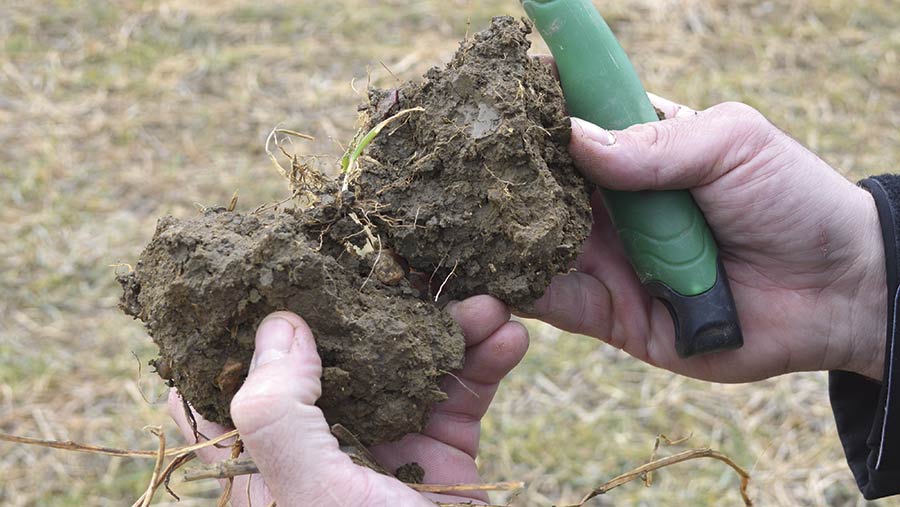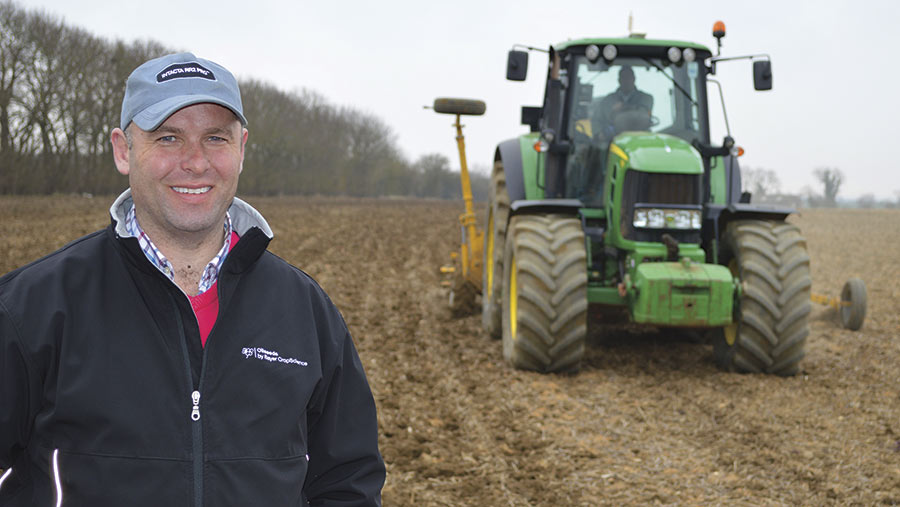Buried underpants can reveal soil secrets
 © David Jones
© David Jones Two arable growers buried their underpants in warm soils last autumn before digging them up eight week later. Analysis showed the more decomposed the pants were, the better the soil health.
Russell McKenzie from Cambridgeshire and Brian Barker from Suffolk buried 100% cotton underpants with the aim of finding a simple way of measuring soil health.
In soils where repeated cultivations and straw removal had taken place, the pants stayed intact. But in no-till or very low-till situations, greater microbial activity in the soil meant the pants were partially decomposed.
See also: Cereals 2017: Upgraded tool helps make most of yield maps
Soil improvers
The two AHDB monitor farmers came together at Cereals 2017 to explain simple, practical ways to change from being soil movers to becoming soil improvers.
“The premise is that the more shredded and holey the pants were, the better the health of the soil they were buried in,” said Mr McKenzie.
He has been gradually moving from deep cultivations to either shallow or no-till, so he said it was a fun and visual way of getting more information on what’s going on under the surface.
However, whether greater soil microbial activity translates into higher yields remains to be seen, he admitted.
“But we do know our soils are draining better as a result of less soil inversion and the move to no-till has reduced our fixed costs,” he added.
Use a spade
Other ways of assessing soil condition include using a spade to inspect soil structure.
“If there’s a compacted layer, it soon becomes obvious when you dig a hole. That allows you to consider whether you need to take remedial action,” said Mr McKenzie.

Russell McKenzie © David Jones
Further good indicators of soil health include earthworm numbers and roots.
“Roots that go across the soil profile rather than down it indicate there’s a problem. And worm numbers are always higher in healthy soils,” he said.
Independent soils expert Phillip Wright emphasised the importance of using the right tyre pressures at drilling to prevent soil compaction.
Direct drilling
Having loosened the soil in a small demonstration plot, it was then direct drilled with the Weaving low-disturbance drill, before drilling depths were investigated.
“We found considerable differences because the soil had been compacted at one end of the drill. The only difference was the tyre pressures,” he said.
Where tyres were at 0.75bar, there was a consistent drilling depth and no restriction on roots. But on the side where they had been inflated to 1-1.2bar, it created a problem.
“It shows the importance of attention to detail on tyre pressures, especially if you have a wet or loose soil and it is vulnerable to damage.”
The value of earthworms
Jackie Stroud, researcher at Rothamsted, highlighted the vital role earthworms play in productive agriculture, stressing that intensive cultivations can lead to a reduction in their numbers.
She identified five key areas where worms have a benefit:
- Improved soil structure – worm burrows are used by crop roots, while worm casts cement soil particles together
- Improved nutrient availability – walls of burrows, worm casts and middens contain plant nutrients, especially nitrogen and sulphur
- Improved drainage – deep vertical burrows made by worms help with water infiltration
- Organic matter decomposition – helps to stimulate the soil microbial community
- Improved cereal production – create better growing conditions for roots and optimise establishment
Three types of worms are found in UK farmland soils:
- Deep-burrowing worms – the size of a pencil, these nocturnal surface-feeding worms incorporate surface litter and improve drainage. They can be seen at night, building middens over their vertical burrows. They are very sensitive to soil management and their numbers can be estimated by counting their middens
- Shallow-burrowing worms – very common in topsoil, with three to five species found in arable fields. Highly active in autumn and spring, they have a role in nutrient recycling and stimulating the microbial community. To count their numbers, dig a 20x20x20cm hole and hand sort the soil.
- Litter-dwelling worms – small, matchstick-sized worms with short lifecycles that are very sensitive to soil management. Found in surface litter in spring and autumn, where they break down the surface material.
